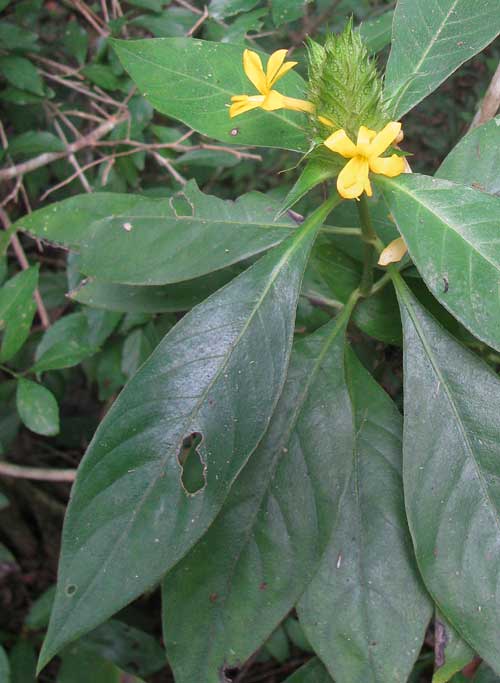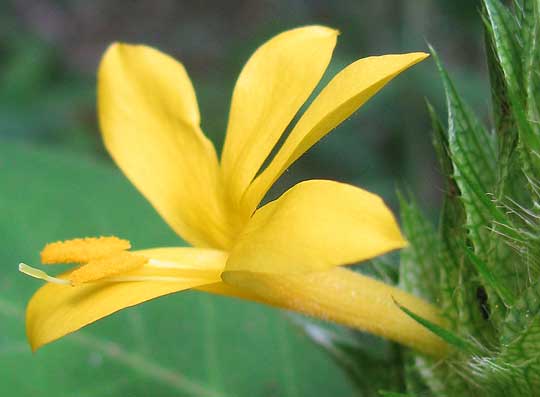Excerpts from Jim Conrad's
Naturalist Newsletter
from the January 10, 2010 Newsletter issued from Hacienda Chichen Resort beside Chichén Itzá Ruins, central Yucatán, MÉXICO; limestone bedrock, elevation ~39m (~128ft), ~N20.676°, ~W88.569°
YELLOW BARLERIAS
Nowadays members of the Acanthus Family are among the most eye-catching wildflowers along trails in the drying-out forest around us. Most conspicuous are the very common, crimson-blossomed Aphelandras I told you about at www.backyardnature.net/yucatan/apheland.htm.
Recently a pretty, knee- to waist-high herb, also a member of the Acanthus Family, has begun issuing crowded spikes of brightly yellow flowers, as seen below:

If you compare the red Aphelandra blossoms at the first link with these yellow flowers you'll see that they both arise from thick, conical clusters of sharp-edged bracts, or modified leaves. However, the plants' blossoms are different. For one thing, Aphelandra flowers bear four pollen-producing stamens while our yellow flowers bear only two. In the Acanthus Family stamen number is important. You can see our yellow flower's two frankfurter-shaped stamens with pollen-coated anthers framing the slender stigma and style below:

Our yellow-flowering wildflower is the Yellow Barleria, BARLERIA MICANS, a plant much prized in many gardens as a "tropical exotic." It's native to southern lowland Mexico south to Colombia.
I wasn't familiar with the genus Barleria. It turns out that Barleria is a pantropical (worldwide in the tropics) genus of herbs and shrubs comprising some 300 species, mostly found in Africa and Asia, and with its center of diversity in tropical East Africa. On the evolutionary Tree of Life it lies closest to the genera Justicia (the North-s Water-Willow) and Ruellia (the North's Wild Petunias).
What a pleasure to run into something completely new!